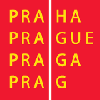Speaker
Description
New measurements on particle production as a function of the charged-particle multiplicity in pp collisions have been reported by the ALICE Collaboration. The novelty of the results relies on the use of transverse spherocity for event classification in either pencil-like or isotropic events, which turn out to be sensitive to the main hard scattering or underlying event, respectively. Results indicate that the average transverse momentum as a function of multiplicity is higher in jetty-like (low spherocity) events than in isotropic (high spherocity) events. While QCD-inspired generators like EPOS LHC and PYTHIA 8 describe the data for minimum bias and isotropic events, the average $p_{\rm T}$ is overestimated by PYTHIA 8 in high multiplicity jetty-like events.
In this work the charged particle production in the toward and transverse regions, relative to the leading-charged particle ($p_{\rm T}^{\rm leading}>4$\,GeV/$c$), are studied as a function of the event multiplicity and event transverse spherocity in pp collisions at $\sqrt{s}=13$ TeV. The study is conducted using EPOS LHC and PYTHIA 8. We will show that in the 0-10\% most jetty-like events, the UE is not negligible. The contributions of the jet and underlying event to the average $p_{\rm T}$ of high multiplicity jetty-like and isotropic events will be shown. The auto-correlation effects in both two models will be discussed. In this context, the observed tension between data and PYTHIA 8 will be explained.
